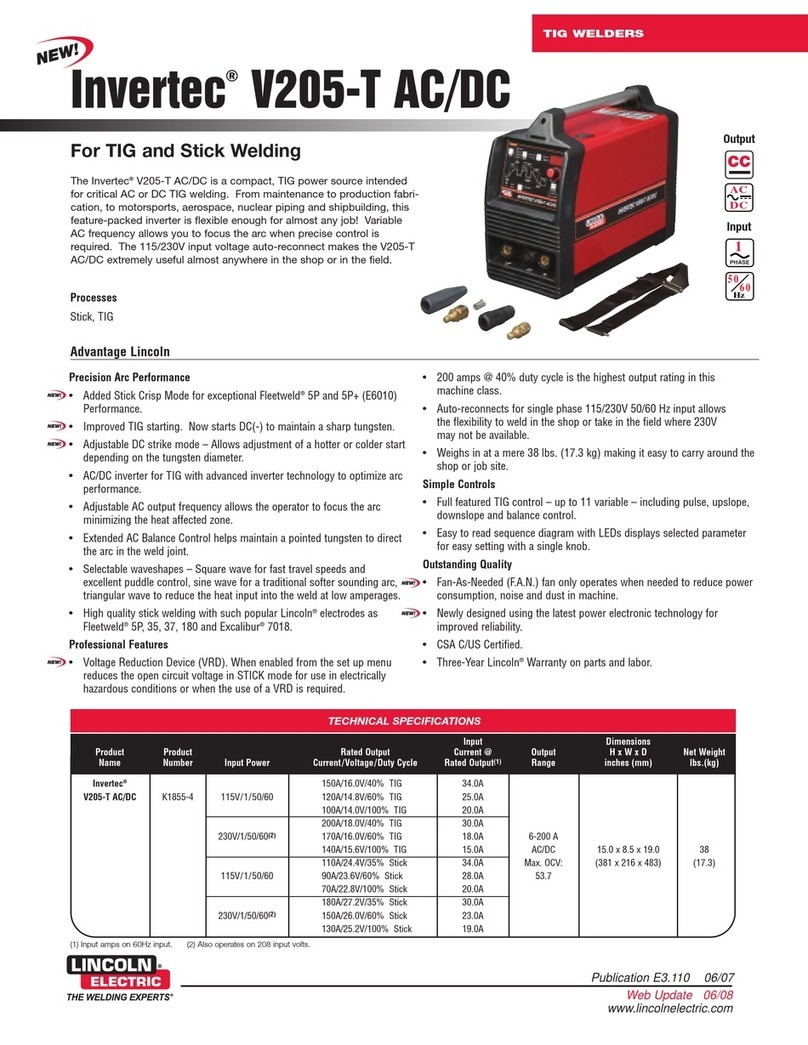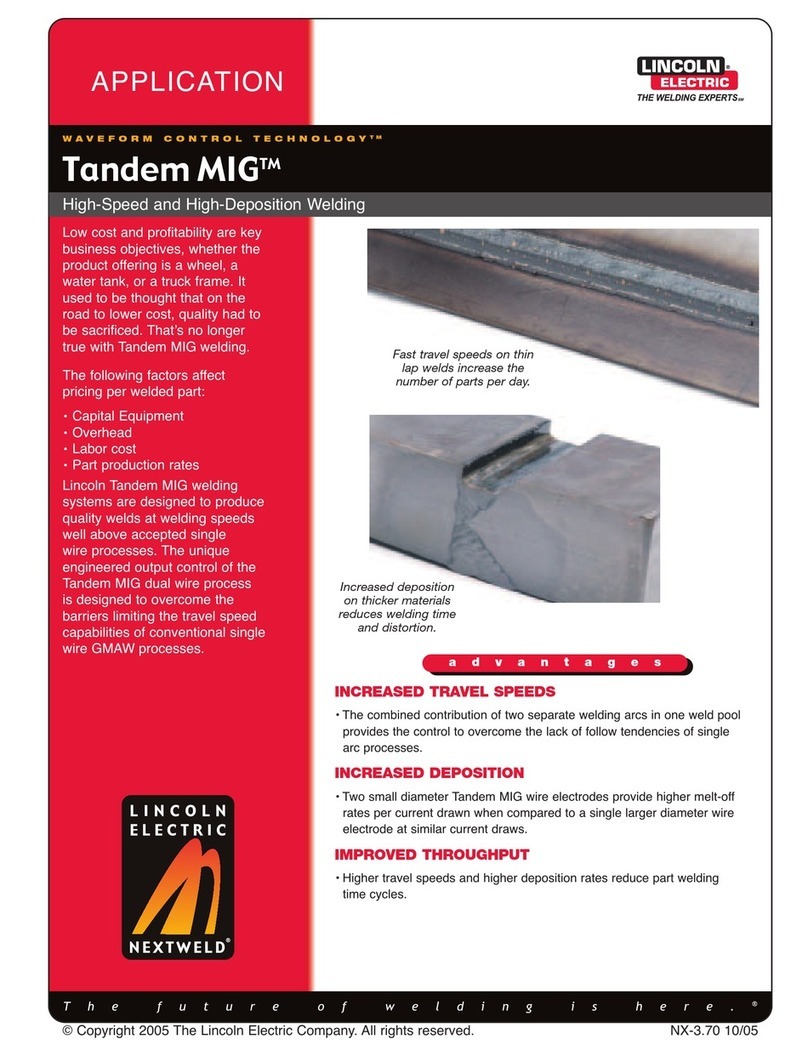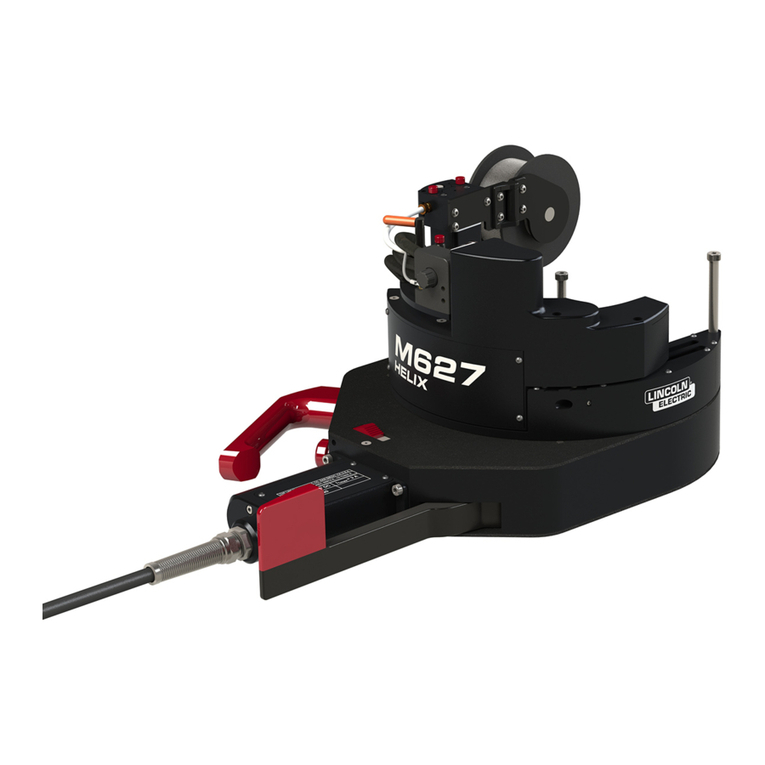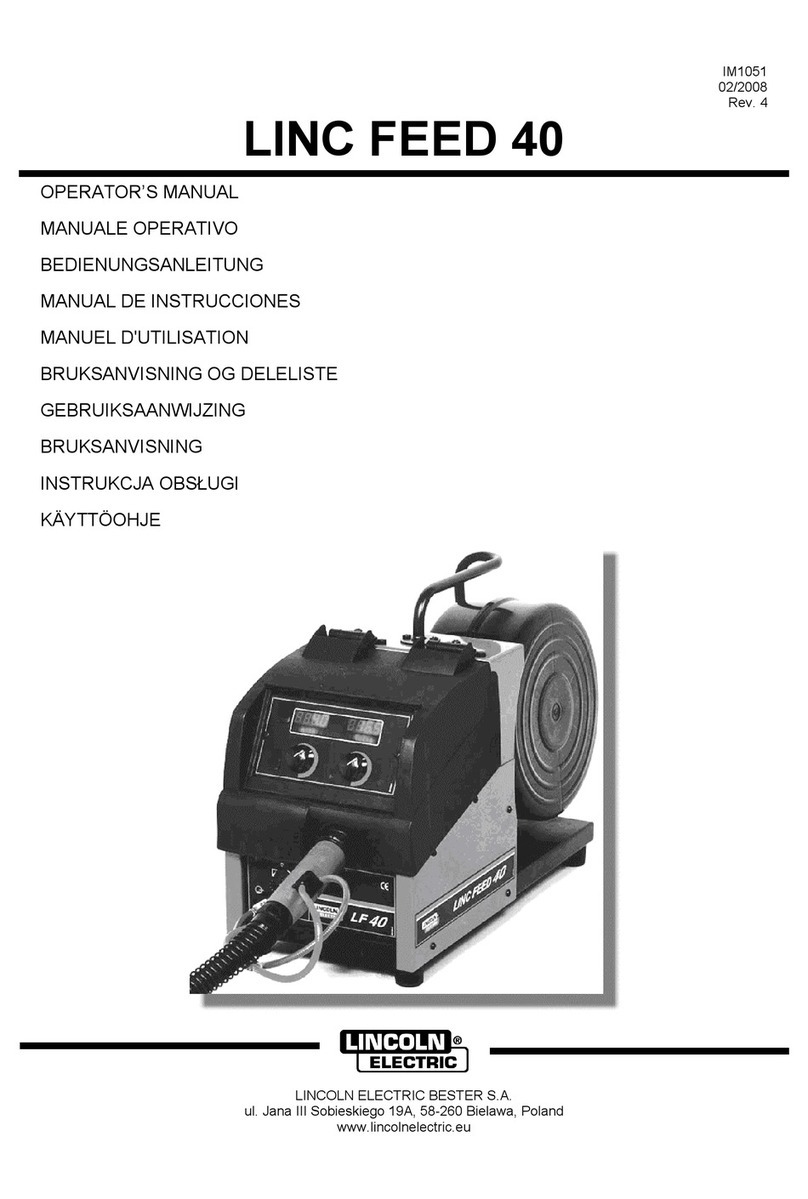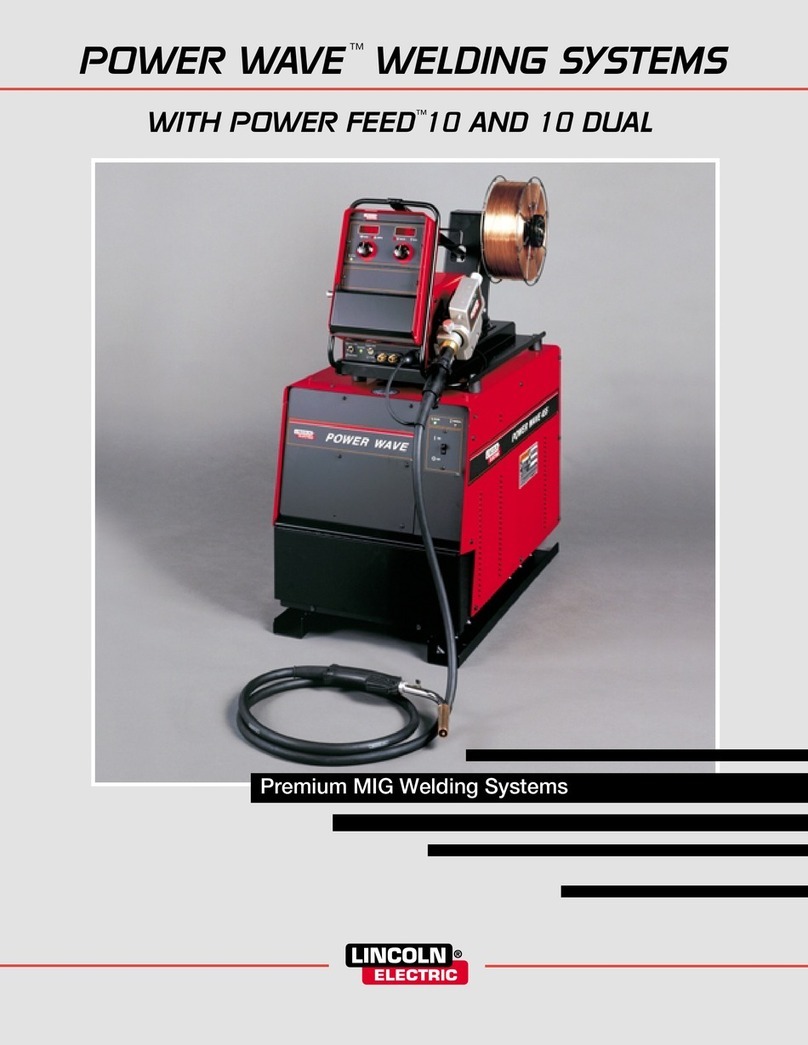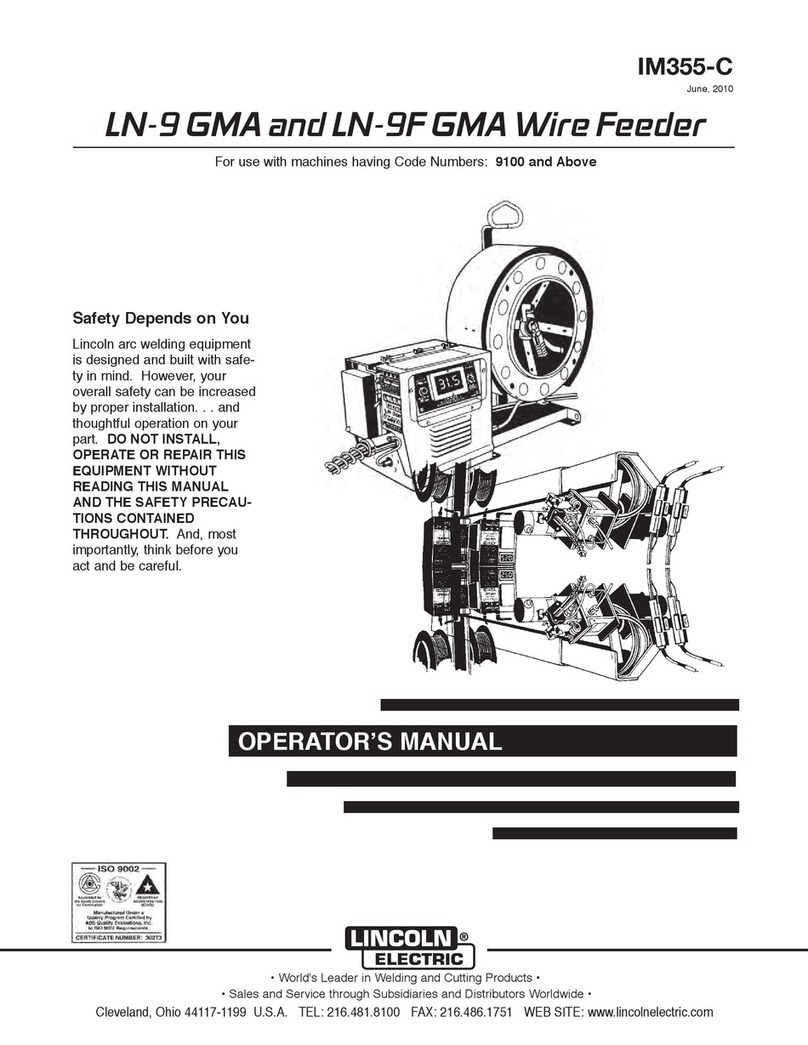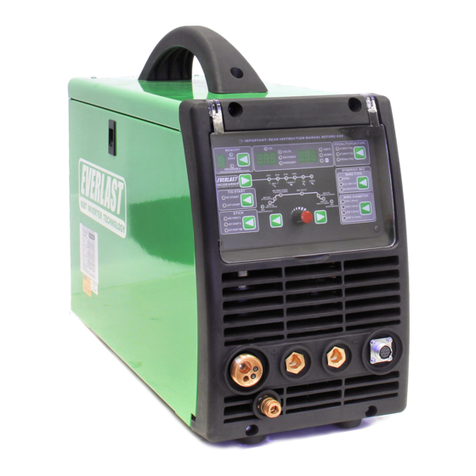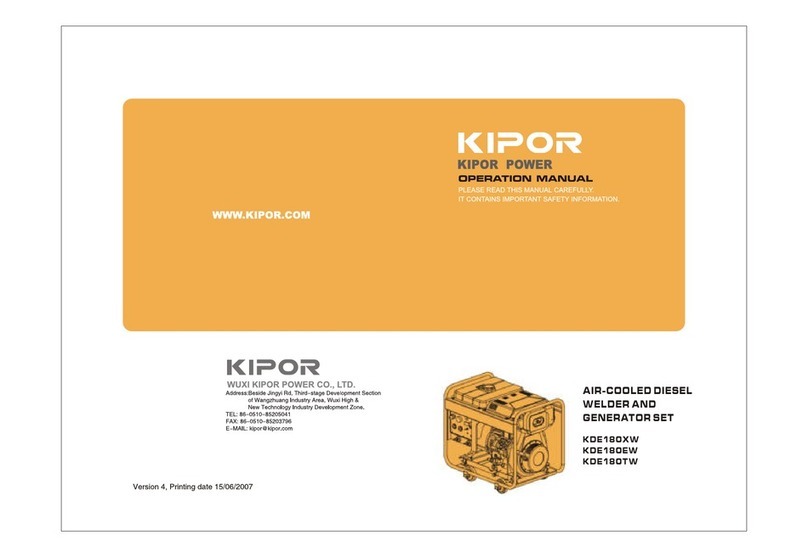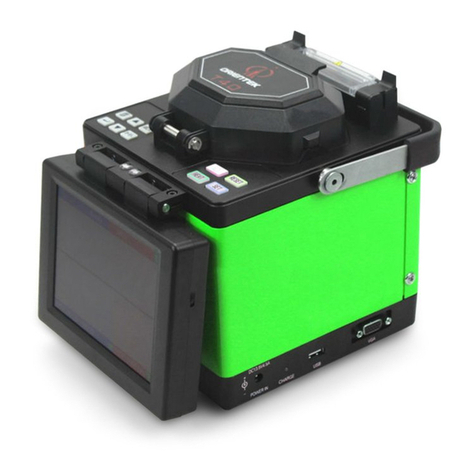9
J. Arc Control (V160-S only): In stick welding mode,
this controls the amount of current used during arc
force. In TIG welding mode, this is not used.
K. Output Current Control: This controls the output, or
welding, current of the machine.
For V160-T machines, the function of this control
knob is changed if a remote control is connected. If
the Remote LED is ON, this indicates that a remote
control is connected and the function of the output
current control will be:
Stick Welding Mode: The remote control will
adjust the output current of the machine from 5 to
160A. The output current control knob on the
display panel is not used.
TIG Welding Modes: The maximum output current
of the machine is set by the output current control
knob. Then the remote control adjusts the output
current from the minimum output (5A) to the value
set by the output current control knob. For example,
if the output current control knob on the machine is
set to 100A then the remote control will adjust the
output current from a minimum of 5A to a maximum
of 100A.
L. Downslope Control (V160-T machines only): In the
TIG welding modes, this control knob will adjust
the downslope time from 0.5 to 20 seconds. (The
upslope time is always 0.5 seconds.) Refer to the
trigger sequence section below to understand how
downslope is activated. In Stick welding mode, this
is not used.
M. Postflow Control (V160-T machines only): In the
TIG welding modes, this control knob will adjust
the shielding gas postflow time from 0.5 to 30
seconds. (The preflow time is always 0.5 seconds.)
In Stick welding mode, this is not used.
N. Meter (V160-T Pulse only): This meter displays the
preset welding current before welding and the actual
welding current during welding. Like the output
current control, the function of the meter is changed
if a remote control is connected. If the Remote LED
is ON, this indicates that a remote control is
connected and the meter will display the following
information before welding (during welding, the
meter always displays the actual welding current):
Stick Welding Mode: The meter displays the preset
welding current but this is adjusted from the remote
control as explained in the Output Current Control
section.
TIG Welding Modes: The meter displays the
maximum output current which is set by the output
current control knob. The preset welding current is
then adjusted by the remote control, but it is not
displayed on the meter.
O. Pulsing Mode Switch (V160-T Pulse only): In the
TIG welding modes, this switch turns the pulsing
function ON and controls the pulsing frequency
range (20Hz or 300Hz). In Stick welding mode, this
is not used.
P. Pulsing LED (V160-T Pulse only): This indicator
shows the pulsing frequency when pulsing is turned
ON. With this indication, the operator can adjust
the frequency to the desired value before welding.
(Note: At higher frequencies the LED blinks very
fast and seems to be continuously ON however it is
pulsing.) If pulsing is turned OFF or if the machine
is in Stick welding mode, the indicator will be OFF.
Q. Pulsing Frequency Control (V160-T Pulse only):
When the pulsing function is ON, this control knob
will adjust the pulsing frequency. The pulsing
frequency adjustment range is 0.2 - 20Hz or 3 -
300Hz depending on the Pulsing Mode Switch
position.
R. Pulsing Background Current Control (V160-T Pulse
only): When the pulsing function is ON, this
control knob will adjust the pulsing background
current. This is the current during the low portion of
the pulse waveform; it can be adjusted from 10% to
90% of the welding current.
TIG Trigger Sequences
For V160-T machines only, TIG welding can be done in
either the 2-step or 4-step mode which is selected with
the Trigger Mode switch. The specific sequences of
operation for these two trigger modes are explained
below.
In these sequences, the Start/Crater current will be used.
This current is 20% of the welding current. For
example, if the welding current is 100A, the Start/Crater
current will be 20A. (If necessary, other values of the
Start/Crater current are possible; contact your Lincoln
Electric sales representative for more information.)
2-Step TIG Sequence
With the Trigger Mode switch in the 2-step position, and
a TIG welding mode selected, the following welding
sequence will occur. To setup the machine for TIG
welding refer to the Output Connections section.
1. Press and hold the TIG torch trigger to start the
sequence.
The machine will open the gas valve to start the
flow of the shielding gas. After a 0.5 second
preflow time, to purge air from the torch hose, the
output of the machine is turned ON. At this time the
arc is started according to the selected welding mode
(Lift TIG or HF TIG). For more information on the
Lift or HF TIG starting methods, refer to the Mode
switch section above.

